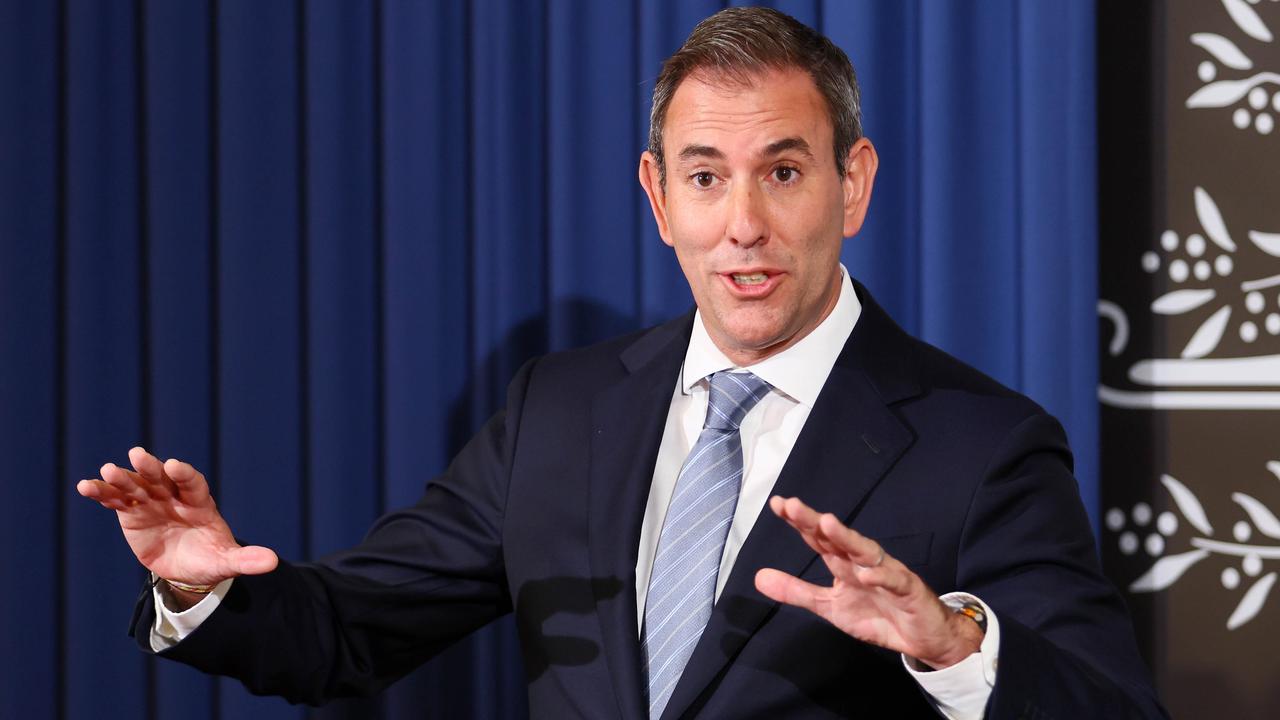Federal Budget 2023: Australia’s debt burden to reach $1 trillion in three years
The government says we will avoid a recession but it also admits it is still unable to balance its books, let alone make serious inroads into the looming trillion-dollar debt and its impact.

Federal Budget
Don't miss out on the headlines from Federal Budget. Followed categories will be added to My News.
Australia’s debt burden is still forecast to sail past $1 trillion in the next three years despite the government promising the first budget surplus for more than a decade.
Treasurer Jim Chalmers has admitted in his budget speech that there are “genuine structural challenges” – code for baked-in, long-term spending commitments such as aged care and the NDIS – which will make it hard to chip away at the country’s enormous debt burden in years to come.
The government is forecasting a razor-thin $4.2bn surplus this financial year – the first since Peter Costello’s final budget in 2007-08 – before returning to a $13.9bn deficit next financial year and increasing to a $36.6bn deficit by 2025-26.
By this time, the nation’s gross debt will hit $1.015 trillion, and will be $36.5bn worse the following year.
Interest payments on this amount are expected to come in at $110bn over the next five years, or $700 per second. But the government says its budget repair measures will save the nation $83bn in interest payments over 10 years.

Dr Chalmers said there would be lower deficits in coming years compared with previous estimates, and a lower overall debt burden, with the improvement achieved through a commitment to saving, not spending, the extra revenue flowing into government coffers from strong commodity prices and high rates of employment.
“This budget we have returned 82 per cent of the extra revenue windfall that’s largely come from lower unemployment, stronger jobs and wages growth, and higher prices for key exports,’’ the Treasurer said.
“We have now returned 87 per cent over this budget and the last.
“We have also found $17.8bn in savings and redirected spending – $40bn over both budgets – and limited annual real spending growth to just 0.6 per cent over five years.’’
Dr Chalmers said the total impact of the government’s spending restraint, combined with increased revenue, over five years would be $125.9bn.
“Gross debt to GDP is now expected to peak lower and earlier at 36.5 per cent of GDP in 2025–26, where it will be $154bn less than was expected in March 2022,’’ he said.
“And because we are returning most of the welcome improvement in revenue to the budget, debt will be almost $300bn lower by the end of the medium term, saving $83bn in interest costs over the next 12 years.’’
While the government’s forecast budget performance over the next five years has improved, Dr Chalmers admitted that, fundamentally, the government was still unable to balance its books, let alone make serious inroads into the looming trillion-dollar debt.
“Beyond the immediate pressures on our budget there are genuine structural challenges facing us into the future – defence, health, aged care, the NDIS and interest payments on debt,’’ Dr Chalmers said.
The budget documents elaborate further, revealing that the “structural challenges” are expected to persist for the next decade at least.
“The medium-term outlook remains under pressure from fast-growing payments,’’ the documents state.
“The government is taking meaningful steps to reduce the structural deficit, including through moderating growth in NDIS spending and a fairer, more sustainable tax system.’’
Over the next 10 years the growth in NDIS payments is expected to average 10.4 per cent per year, while hospital and medical benefits payments will be up by 6.5 per cent and 6 per cent, and aged care payments will increase 6.1 per cent.
The budget documents state the government is committed to limiting spending growth until gross debt as a share of the economy “is on a downwards trajectory, while growth prospects are sound and unemployment is low’’.
Originally published as Federal Budget 2023: Australia’s debt burden to reach $1 trillion in three years



